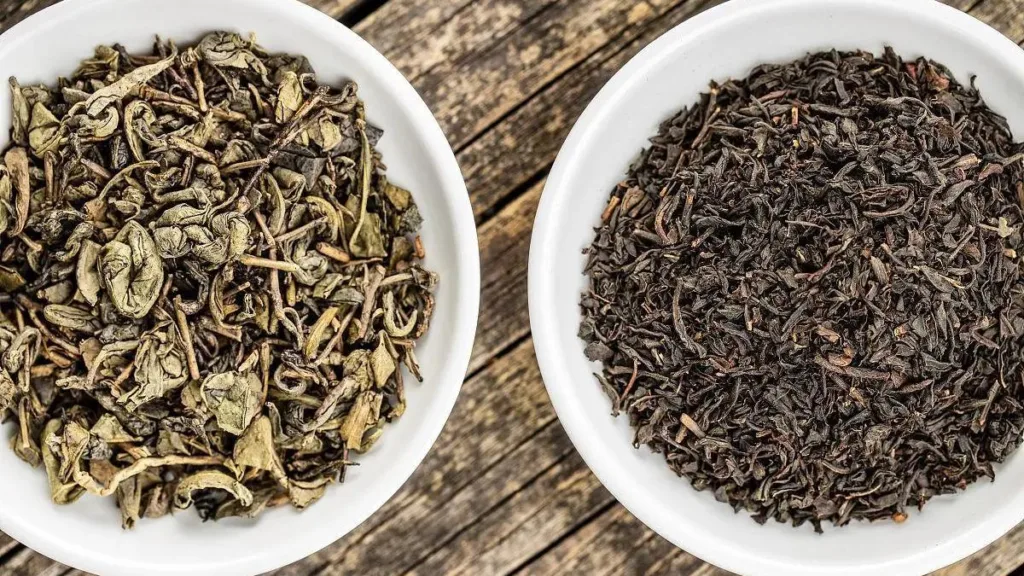White flowers in Chinese tea typically refer to a characteristic found in Pu-erh tea, a traditional fermented tea from China. These white flowers, often referred to as tea hairs or tea fuzz, are an integral part of the Pu-erh tea experience and play a significant role in its flavor and aroma.
The Nature of Pu-erh Tea: Pu-erh tea is unique among Chinese teas due to its distinctive processing and storage methods. During the production of Pu-erh tea, the leaves undergo a special fermentation and aging process. This process triggers various chemical changes within the tea leaves, resulting in a unique flavor profile and aroma. The presence of white flowers on the tea leaves is a direct result of these specific fermentation and storage processes.
Understanding White Flowers in Pu-erh Tea: The white flowers found on Pu-erh tea leaves are actually a type of downy substance called “tea hairs” or “tea fuzz.” These small, fine hairs can be white or silvery and are typically located on the surface of tea leaves. They serve a protective role for the tea leaves, helping to shield them from pests and harsh environmental conditions.
The Importance of White Flowers: The presence of white flowers on Pu-erh tea leaves is a defining characteristic of this tea variety and contributes significantly to its quality and flavor. The white flowers are not only aesthetically pleasing but also impact the overall tea experience in the following ways:
- Aroma: The tea hairs on Pu-erh tea leaves are rich in essential oils that contribute to the tea’s distinctive aroma. These oils can have various floral, herbaceous, or earthy notes that enhance the overall fragrance of the tea.
- Flavor: The tea hairs also contain essential oils that contribute to the flavor profile of Pu-erh tea. They can add complexity and depth to the taste, making Pu-erh tea a multi-layered and nuanced experience.
- Texture: The tea hairs affect the texture of Pu-erh tea. When brewed, the tea hairs contribute to the tea’s mouthfeel, making it smoother and sometimes slightly viscous.
- Visual Appeal: White flowers on tea leaves create an attractive visual aspect in Pu-erh tea. This unique feature is often appreciated by tea enthusiasts and collectors, making Pu-erh tea not only a delight to drink but also a work of art to behold.
Variation in White Flowers: The quantity and appearance of white flowers on Pu-erh tea leaves can vary based on factors such as the tea tree variety, growing environment, and production methods. For example, Pu-erh tea is primarily made from large-leaf tea varieties, which tend to have more tea hairs. Additionally, the climate and soil conditions in Pu-erh tea-producing regions can influence the growth of these tea hairs.
Other Teas with White Flowers: Apart from Pu-erh tea, there are other Chinese teas that may contain white flowers as a part of their characteristics:
- Jasmine Tea (茉莉花茶): Jasmine tea is made by blending tea leaves (often green tea) with fresh jasmine flowers. The tea leaves absorb the floral aroma during the infusion process, resulting in a delightful jasmine fragrance. While jasmine tea doesn’t have white flowers on the leaves like Pu-erh, it’s closely associated with the beautiful scent of jasmine blossoms.
- White Peony Tea (白牡丹): White Peony is another type of Chinese white tea. It is made from young leaves and buds of the tea plant and is known for its delicate, fresh, and floral flavor. White Peony tea may feature white, downy leaves, contributing to its unique appearance.
In conclusion, the white flowers seen on Pu-erh tea leaves are an essential part of the tea’s identity, affecting its aroma, flavor, and texture. They result from Pu-erh tea’s distinctive fermentation and aging processes, making it a truly unique and beloved variety of Chinese tea.



